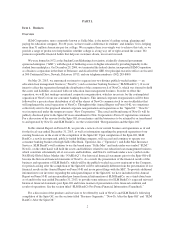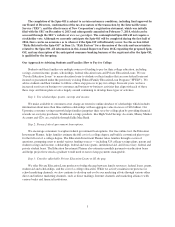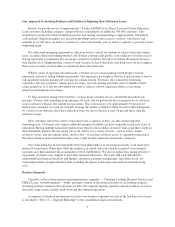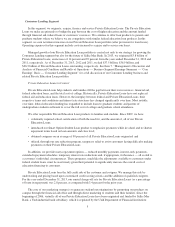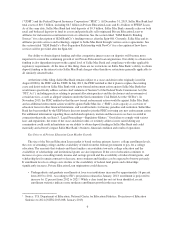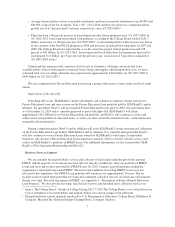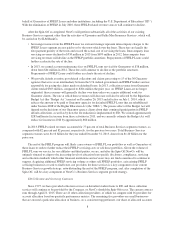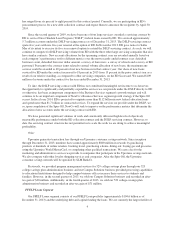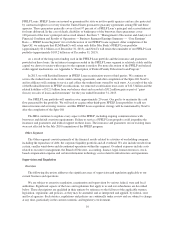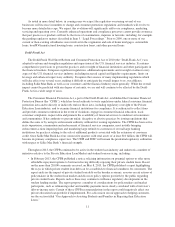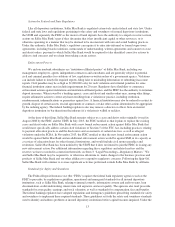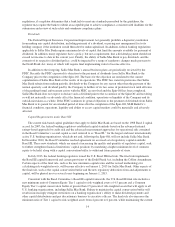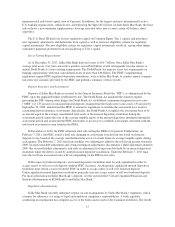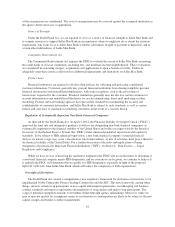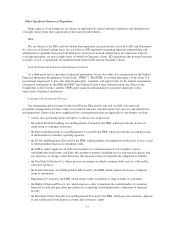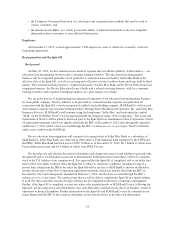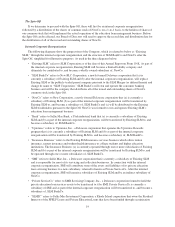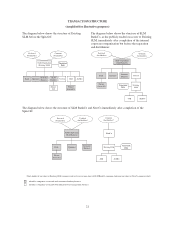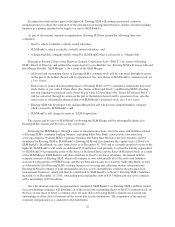Sallie Mae 2013 Annual Report Download - page 14
Download and view the complete annual report
Please find page 14 of the 2013 Sallie Mae annual report below. You can navigate through the pages in the report by either clicking on the pages listed below, or by using the keyword search tool below to find specific information within the annual report.• On October 16, 2013, the Private Education Loan Ombudsman within the CFPB submitted its second
report based on Private Education Loan inquiries received through the CFPB portal from October 1, 2012
through September 30, 2013, including 1,327 inquiries transmitted to Sallie Mae during that period. The
Dodd-Frank Act created the Private Education Loan Ombudsman within the CFPB to receive and attempt
to informally resolve inquiries about Private Education Loans. The Private Education Loan Ombudsman
reports to Congress annually on the trends and issues that it identifies through this process. The report
offers analysis, commentary and recommendations to address issues reported by consumers. The report’s
key observations included: (1) just under 50 percent of all private student loan inquiries received were
related to consumers seeking a loan modification or other option to reduce their monthly payment;
(2) payment processing problems continue to represent a significant amount of the inquiries received by
the CFPB, such as confusion about payment application policies, the application of excess payments and
underpayments, timing of payment processing, access to payment histories, lost payments, obtaining
payoff information and servicing transfers; and (3) many of the private student loan inquiries mirror the
problems heard from consumers in the mortgage market and that recent changes to mortgage servicing
and credit card servicing practices might be applicable to the Private Education Loan market.
• On December 3, 2013, the CFPB issued a final rule defining larger participants of the student loan
servicing market. The rule, which will become effective on March 1, 2014, will allow the CFPB to
federally supervise certain nonbank student loan servicers for the first time. Under the final rule, the
CFPB will have supervisory authority over any nonbank student loan servicer that services more than one
million borrower accounts, including accounts for both Private Education Loans and federal student
loans. Our student loan servicing subsidiaries will be subject to this new oversight. The CFPB’s
supervision will include gathering reports, conducting examinations for compliance with federal
consumer financial laws and taking enforcement actions as appropriate, similar to the CFPB’s current
supervisory authority over large bank student loan servicers.
Debt Collection Supervision
Consistent with the authority granted to it under the Dodd-Frank Act, the CFPB also maintains supervisory
authority over larger consumer debt collectors. On October 24, 2012, the CFPB issued its final debt collection
larger participant rule and examination procedures. The rule defines larger participants as third-party debt
collectors, debt buyers and collection attorneys with more than $10 million in annual receipts resulting from
consumer debt collection. The rule became effective January 2, 2013. Under the rule, our collection subsidiaries
are considered larger participants and are subject to supervision. The issuance of the CFPB’s rules does not
preempt the various and varied levels of state consumer and collection regulations to which the activities of our
subsidiaries are currently subject. We also utilize third-party debt collectors to collect certain defaulted and
charged-off education loans. We continue to be responsible for oversight of their procedures and controls.
Regulation of Sallie Mae Bank
Sallie Mae Bank was chartered in 2006 and is a Utah industrial bank regulated by the FDIC and the UDFI.
We are currently not a bank holding company and therefore are not subject to the regulation applicable to bank
holding companies. However, we and our non-bank subsidiaries are subject to regulation and oversight as
institution-affiliated parties. The following discussion sets forth some of the elements of the bank regulatory
framework applicable to us, Sallie Mae Bank and our other non-bank subsidiaries.
General
Sallie Mae Bank is currently subject to primary regulation and examination by the FDIC and the UDFI.
Numerous other federal and state laws as well as regulations promulgated by the FDIC and the state banking
regulator govern almost all aspects of the operations of Sallie Mae Bank and, to some degree, our operations and
those of our non-bank subsidiaries as institution-affiliated parties.
12


